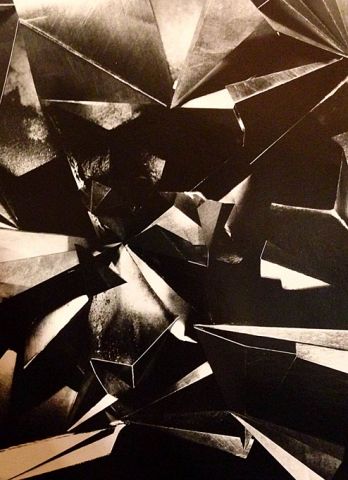<CP>
Eddie surprised me this week, which is nothing new, except that this was quite a nice surprise for once. He’d secretly booked a day in the darkroom on his own to print some of our negatives, after which I was unexpectedly presented with a box of new work to look through. I’ve already expressed a preference for staying out of the darkroom for the good of the project (and indeed, my sanity) so this felt like the perfect conclusion to our first phase of production together. Firstly, I have to thank Eddie for taking the initiative in the first place and for making so many prints. Now, with the benefit of hindsight, I can see that they initially received a rather mixed reception from me, and maybe this was unfair. I have to admit to being slightly underwhelmed with them on first inspection, but after a couple of days dwelling on them I am starting to look at them more favourably. I’ll try to explain my feelings about them and what I think I need to do to address these.
Eddie’s prints raised a couple of interesting issues for me, firstly, that I don’t really know what photography looks like any more. Photography isn’t the pin sharp, hyper-real image on the backlit screen of the laptop, which can be adjusted to suit my viewing taste by hammering the contrast buttons on my keyboard, or zooming in and out to adjust scale. It’s a fixed, flat experience that shows what is actually on the negative, and not the interpretation of the negative that I see in my mind’s eye. I think I really need to look at more photography, real prints, and not just images on a screen. It seems quite possible that I’ve been confusing the real experience of photography (or more specifically, photographic printing) with the imaginary imprints of lines, light and space left inside my head after looking at our initial scans of the contact sheets on a pixellated screen. To me, photography still feels like a mysterious practice carried out blind, as opposed to the visual, experiential process of drawing. I think I’ve identified a shortcoming in my experience and an unrealistic expectation of what a hand-printed photograph is, and will be investing some time in looking at real examples of prints as soon as possible.
The second issue that arose was that, although delighted that it wasn’t me in the darkroom doing all the messy work, I’m now not entirely sure that being absent from the process has resulted in Eddie making work that I feel is mine. By that I don’t mean that he’s worked on my behalf as a skilled technician or fabricator, which I wouldn’t necessarily mind, but moreover that he’s interpreted the work in a way that is unique to him. He didn’t print the negatives that I had highlighted on the contact sheet, he had (of course) ignored those ones and chosen the ones that he liked best. Instantly I found this frustrating and annoying. But maybe I shouldn’t, perhaps this initial set of prints is Eddie’s work, his vision and how he thinks it best to document our collaboration. Although we had talked at length about what we like, see and are excited about in the contact sheets, how does this translate to one creative person ‘making’ or ‘finalising’ work that has to that point been a dialogue between two voices? Does it naturally default to the dominant voice of the one person present in the darkroom? I found his prints – or maybe I mean his interpretation of my images – too dark, too contrasty, too harsh and unforgiving, too literal and actually, maybe, too insensitive. Although beautiful prints, technically perfect and leading to interesting discussions about toning and further reworking, I felt a sense of something inevitable looming. As we sat contemplating Eddie’s pile of prints I heard a voice say, ‘I think I should make a set of my own’.
To my surprise, that voice was mine.
